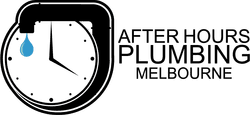Key information at a glance
Average quarterly costs (2025):
- Single person: $179 ($716 annually)
- Two people: $268 ($1,072 annually)
- Families (3+): $312-$323 ($1,248-$1,292 annually)
| Household Size | Quarterly Cost | Annual Cost | Daily Cost |
|---|---|---|---|
| Single person | $179 | $716 | $1.96 |
| Two people | $268 | $1,072 | $2.94 |
| Family (3+) | $312 - $323 | $1,248 - $1,292 | $3.42 - $3.54 |
Target water usage: 150 litres per person daily (current 2025 average: 163 litres)
In 2025-26, the average annual water bill in Melbourne is estimated to be around $1,100. This is based on average use of 150 kilolitres per year. The exact amount can vary depending on the water provider and household usage.
Table of contents
- The current state of Melbourne water bills in 2025
- 2025 average costs by household size
- Recent price changes and trends
- Key statistics that matter
- Understanding your water bill components
- Fixed charges
- Usage charges you pay for what you use
- Additional charges
- Melbourne’s water providers
- Yarra Valley Water: Northern and eastern suburbs
- South East Water: Southeastern Melbourne
- Greater Western Water: Western Melbourne
- Melbourne Water: The wholesale provider
- Why water bills are rising in Melbourne
- Infrastructure investment
- The operational costs of maintaining world-class standards
- Climate and environmental factors
- Regulatory and government factors
- Government assistance and rebates available in 2025
- Concession programs for eligible households
- Community rebate program for vulnerable households
- Utility relief grants and emergency financial support
- Life support concessions
- Proven strategies to reduce your water bill
- Quick wins
- Home improvements and upgrades
- Behavioural changes
- Technology and monitoring solutions
- Garden and outdoor water savings
- Planning for future water costs
- 2026-2031 price outlook
- Infrastructure investment impacts
- Long-term savings strategies
- Practical action plan
- Immediate actions
- Short-term improvements
- Long-term planning
Across Victoria, water providers have implemented price increases of around 3% annually1, which sits well above the overall inflation rate. For Melbourne households already juggling mortgage stress, grocery bills, and energy costs, understanding your water bill has never been more important.
But here’s some good news: Melbourne continues to maintain the lowest water bills of any Australian capital city, and there are plenty of practical strategies you can implement to keep your costs under control. Whether you’re a first-time renter trying to budget for utilities, a growing family looking to reduce household expenses, or a homeowner planning efficiency upgrades, this comprehensive guide will give you everything you need to understand, manage, and reduce your water bills in 2025.
We’ll break down exactly what Melbourne households are paying for water in 2025, explore the factors driving these costs, decode the complex components of your bill, and most importantly, share proven strategies that can save you hundreds of dollars annually. We’ll also cover the latest government rebates and assistance programs that many Melburnians don’t even know they’re eligible for.
The current state of Melbourne water bills in 2025
Melbourne water bills in 2025 average $179 quarterly ($716 annually) for single-person households, $268 quarterly ($1,072 annually) for two-person households, and $312-$323 quarterly ($1,248-$1,292 annually) for families of three or more.
Understanding where you stand with water costs starts with knowing the numbers. As we move through 2025, Melbourne water bills reflect a complex balance of infrastructure needs, population growth, and regulatory decisions that directly impact your quarterly payments.
2025 average costs by household size
The reality is that water bills vary significantly depending on how many people live in your home. Here’s what Melbourne households are actually paying in 2025:
Single-Person Households are currently paying an average of $179 per quarter2, which works out to approximately $716 annually. This represents a notable increase from $158 quarterly in 20233, reflecting the ongoing cost pressures facing the water industry. Even if you’re incredibly water-conscious, fixed charges mean you’ll still pay a baseline amount regardless of your actual usage.
Two-Person Households typically see quarterly bills around $2684, or roughly $1,072 annually. This represents good value when split between two adults, working out to about $536 per person yearly – significantly less than what single occupants pay due to the shared fixed costs.
Family Households with three or more people generally pay between $312 and $323 quarterly5 ($1,248-$1,292 annually), depending on specific usage patterns and the number of household members. While larger families naturally use more water for cooking, cleaning, and bathing, the per-person cost often works out to be the most economical.
For context, the overall average Australian water bill sits at approximately $272 quarterly6, which means Melbourne households are paying slightly less than the national average – a testament to the efficiency of our water system and regulatory oversight.
Recent price changes and trends
The 2024-25 period brought price increases that averaged around $33 annually (about 3%) for Melbourne households7, which exceeded the general inflation rate. This increase was approved by the Essential Services Commission following detailed reviews of each water company’s operational needs and infrastructure requirements.
Looking at specific providers, customers of Barwon Water and Yarra Valley Water experienced the lowest bill increases at around $30 annually8, while some regional Victorian customers faced higher increases. Melbourne Water’s annual waterways and drainage charges also increased from $118 to $122 for residential properties9.
However, there’s encouraging news on the horizon. Melbourne Water has proposed maintaining its position as the provider of Australia’s lowest capital city water bills through to 2031, with modest price increases capped at 2.3% annually above inflation10. This is in stark contrast to some other Australian cities grappling with price increases of up to 50% over five-year periods11.
Key statistics that matter
To put your usage in perspective, the average Melbourne household currently pays $2.71 per day12 for comprehensive water services – that’s less than a coffee! This covers not just the water flowing from your taps, but also sewerage treatment, drainage infrastructure, and waterway management across the entire metropolitan area.
Melbourne Water has set a target for residents to use no more than 150 litres per person daily, though the current average sits around 163 litres per person13. This means most Melburnians need to reduce their daily water consumption by just 13 litres (about two toilet flushes) to meet the efficiency target.
The good news? Most people only need to save around 2 litres per day to hit the target14 – that’s easily achievable by making small changes to everyday habits, which we’ll explore in detail later in this guide.
Understanding your water bill components
One of the biggest challenges Melbourne residents face is simply understanding what they’re paying for when that quarterly bill arrives. Let’s break down the complex matrix of charges that make up your water bill, so you can identify where your money goes and where you might have control.
Fixed charges
Your water bill includes several fixed charges that you’ll pay regardless of how much water you actually use. Think of these as the “membership fees” for being connected to Melbourne’s water network.
The Water Supply System Charge is a quarterly fixed fee that covers the cost of maintaining and operating the vast network of pipes, treatment plants, and infrastructure that delivers clean water to your property 24/7. This includes everything from the major treatment plants to the pipes running down your street.
The Sewerage System Charge is another fixed quarterly charge covering the removal and treatment of wastewater from your property. This encompasses the sewer network, treatment plants, and the complex process of returning clean water to the environment. Essentially, you’re paying for water to be cleaned after you’ve used it.
These fixed charges ensure that even if you use minimal water, you’re contributing to the massive infrastructure costs required to maintain Melbourne’s world-class water system. It’s similar to paying a line rental for your phone – you pay for access to the network regardless of usage.
Usage charges, you pay for what you use
The variable portion of your bill is where you have the most control. From July 2023, water usage and sewage disposal charges were combined into a single water usage charge, simplifying the billing process.
Your Water Usage Charge covers both the cost of water delivered to your property and the cost of treating and removing the wastewater. This is calculated based on your meter readings, which occur approximately every three months. The charge uses tiered pricing (like income tax brackets) - you pay one rate for your basic usage, then higher rates as you use more water. This pricing structure encourages conservation by making excessive water use progressively more expensive.
Water meters measure consumption in kilolitres (kL) - that’s 1,000 litres, or about what an average household uses in a week. Your bill will show both your current reading and your previous reading to calculate usage over the billing period. Understanding this helps you track your consumption patterns and identify any unusual spikes that might indicate leaks.
Additional charges: Community and environmental contributions
Beyond the core water and sewerage charges, your bill includes several other components that fund broader community and environmental benefits.
The Melbourne Water Waterways and Drainage Charge is collected on behalf of Melbourne Water and currently sits at $122 annually for residential properties15 (up from $118 in the previous year). This funding supports the management of rivers, creeks, floodplains, and the regional drainage system that protects Melbourne from flooding and maintains our waterway health.
The Parks Victoria Charge is collected quarterly and funds the maintenance and enhancement of Victoria’s parks, zoos, the Royal Botanic Gardens, and the Shrine of Remembrance. The minimum annual charge is $87.1916, calculated at $0.00510 per dollar of your property’s Net Annual Value (NAV - essentially your property’s estimated annual rental value used for council rates).
These additional charges reflect Melbourne’s commitment to environmental stewardship and community amenities – ensuring that our water bills contribute to the broader liveability that makes Melbourne consistently rank among the world’s most liveable cities.
Now that you understand what you’re paying for, let’s explore which company actually sends you the bill and manages your water services.
Melbourne’s water providers
Melbourne’s water supply is managed through a carefully coordinated system involving multiple providers, each serving specific geographic areas. Understanding which provider serves your area helps you know where to go for service, billing inquiries, and efficiency programs.
Yarra Valley Water: Northern and eastern suburbs
Yarra Valley Water is Melbourne’s largest retail water utility, providing essential water and sanitation services to more than 1.8 million people17 across northern and eastern Melbourne. Their service area extends from the inner suburbs out to growing outer areas like Whittlesea and Nillumbik.
If you live in suburbs like Richmond, Fitzroy, Preston, Heidelberg, or the outer growth areas of Epping and South Morang, Yarra Valley Water is your provider. They’ve consistently maintained some of the lowest bill increases among Victorian water companies, with recent annual increases of around $3018 – well below many other providers.
Yarra Valley Water has been particularly proactive in water efficiency programs and digital meter technology trials. They’re currently installing digital meters in thousands of Melbourne homes to help spot leaks early, before they become expensive problems for customers.
South East Water: Southeastern Melbourne
South East Water serves the southeastern suburbs of Melbourne, covering areas from the inner south-east through to the Mornington Peninsula and growth corridors like Pakenham and Cardinia. If you live in suburbs like St Kilda, Caulfield, Dandenong, Frankston, or Cranbourne, this is your water provider.
For 2024-25, South East Water kept price rises in line with inflation. Based on average consumption of 150 kilolitres annually, customers pay approximately $12.43 more each quarter19 compared to the previous year. They’ve been committed to reducing carbon emissions by 45% by 2025 and have invested heavily in sustainable water management practices.
South East Water offers comprehensive online account management through their mySouthEastWater portal, where customers can view billing history, monitor usage patterns, and set up payment plans. They’re also trialling new digital meter technology to help customers identify leaks and unusual usage patterns before they impact bills.
Greater Western Water: Western Melbourne
Greater Western Water serves western Melbourne suburbs and some growth areas, covering regions from the inner west through to areas like Melton, Bacchus Marsh, and new developments in the west. Their service area includes suburbs like Footscray, Sunshine, Werribee, and Point Cook.
This provider operates under two pricing zones following a recent merger, with different rates for areas previously served by different companies. Residential tenants in some areas receive efficiency rebates spread across four bills in the 2024/25 financial year, providing welcome relief for renters.
Greater Western Water has been working toward unified pricing across their service area, though they currently maintain distinct central and western pricing zones. They offer detailed suburb-by-suburb guidance on their website to help customers determine which pricing zone applies to their property.
Melbourne Water: The wholesale provider
While you won’t receive a bill directly from Melbourne Water (unless you’re in certain outer areas), they play a crucial role in your water costs. Melbourne Water operates as the wholesale provider, managing major infrastructure like treatment plants, reservoirs, and the bulk supply network.
They sell treated water to the retail companies (Yarra Valley Water, South East Water, etc.) who then distribute it to your home. Melbourne Water also manages major sewage treatment plants and the overall sewerage system for metropolitan Melbourne.
Understanding this structure helps explain some of the charges on your bill – like the waterways and drainage charge collected on Melbourne Water’s behalf – and why infrastructure decisions made by Melbourne Water ultimately impact everyone’s bills across the metropolitan area.
While understanding your provider and bill structure is important, many residents want to know why their costs keep rising. Let’s examine the key factors driving water bill increases in Melbourne.
Why water bills are rising in Melbourne
Understanding the forces driving water bill increases helps put your costs in perspective and explains why these essential services require ongoing investment. While price rises are never welcome, the factors behind them reflect Melbourne’s commitment to maintaining world-class water quality and preparing for future challenges.
Infrastructure investment
Every time you turn on a tap and get clean, safe water, you’re benefiting from one of the world’s most sophisticated water supply systems. But maintaining this system requires massive ongoing investment that directly impacts your bills.
Melbourne’s water infrastructure includes thousands of kilometers of pipes, some dating back over a century. These aging networks require constant maintenance, repair, and eventual replacement to prevent major failures that would be far more costly to fix and would interrupt service to thousands of customers.
The network is also expanding to serve Melbourne’s rapidly growing population. New suburbs require new pipes, pumping stations, and treatment capacity. The cost of this expansion is shared across all customers through bill increases, ensuring that growth areas receive the same high-quality service as established suburbs.
Recent major projects include upgrades to treatment plants, replacement of aging mains, and installation of new technology to improve system efficiency. While these investments increase current bills, they prevent much larger costs down the track and ensure continued reliable service for decades to come.
The operational costs of maintaining world-class standards
Melbourne takes pride in delivering some of the highest-quality tap water in the world, but achieving this standard requires sophisticated treatment processes and ongoing operational expenses that contribute to bill increases.
Water treatment involves multiple stages of filtration, disinfection, and quality testing to ensure every drop meets strict health standards. The chemicals, energy, and specialized equipment required for this process represent significant ongoing costs that scale with the volume of water processed.
Environmental compliance adds another layer of operational expense. Water companies must meet increasingly stringent environmental standards for wastewater treatment, protecting rivers and bays from pollution. These environmental protection measures require advanced treatment technologies and ongoing monitoring programs.
Energy costs represent a substantial portion of operational expenses, particularly for pumping water across Melbourne’s varied topography and running treatment plants 24/7. As energy prices fluctuate, these costs directly flow through to water bills.
Climate and environmental factors
Climate change is creating new challenges for Melbourne’s water supply that require expensive adaptive measures. While Melbourne’s water storages are currently secure, the system must be prepared for more frequent and severe droughts.
During drought periods, Melbourne relies on the desalination plant at Wonthaggi to supplement traditional water sources. Operating this plant is significantly more expensive than using water from reservoirs, but it provides essential security during dry periods. The costs of maintaining this drought-proofing capacity are reflected in ongoing bills, even when the plant isn’t operating at full capacity.
Water source diversification efforts, including recycled water projects and stormwater harvesting, require substantial upfront investment and ongoing operational costs. While these projects reduce long-term risks and environmental impacts, they contribute to current bill increases.
Environmental protection programs, including river health initiatives and wetland restoration projects, are funded through water bills. These programs ensure that Melbourne’s water cycle remains sustainable for future generations, but they add to current costs.
Regulatory and government factors
The Essential Services Commission’s oversight of water pricing ensures that bill increases are justified and necessary, but this regulatory process also contributes to costs through compliance requirements and administrative processes.
Government policies requiring water companies to meet specific environmental targets, efficiency standards, and service quality measures often require significant investment in new technologies and processes. While these policies deliver community benefits, they contribute to bill increases.
Future investment requirements, including preparations for climate change, population growth, and aging infrastructure replacement, are factored into current pricing decisions. This forward-planning approach spreads major costs over time rather than creating sudden, dramatic bill increases when major projects are completed.
Understanding these cost drivers helps explain why bills rise, but the good news is that substantial assistance is available to help Melbourne households manage these costs.
Government assistance and rebates available in 2025
Many Melbourne households are missing out on significant savings because they’re simply unaware of the assistance programs available to them. The Victorian Government and water companies offer various rebates, concessions, and support programs that can substantially reduce your water bills – sometimes by hundreds of dollars annually.
Concession programs: Automatic savings for eligible households
The most significant assistance available is the Water and Sewerage Concession, which provides eligible concession card holders with a 50% discount20 on their annual water and sewerage bills. This isn’t a cap or maximum amount – it’s a genuine 50% reduction on your entire bill, which can save eligible households several hundred dollars each year.
To qualify, you need to hold a valid Pensioner Concession Card, Health Care Card, or Commonwealth Seniors Health Card. The concession is automatically applied once your water company verifies your concession card details with Centrelink, so you don’t need to reapply each year as long as your card remains valid.
For households struggling with the fixed charges that make up a large portion of smaller bills, this concession provides particularly valuable relief. Even low water users benefit significantly from the 50% reduction on service charges and fixed fees.
If you’re eligible but not currently receiving the concession, contact your water provider immediately with your concession card details. The savings can be backdated in some circumstances, potentially providing immediate relief on current outstanding amounts.
Community rebate program for vulnerable households
The Community Rebate Program is one of Victoria’s best-kept secrets for water bill relief. This program offers free water audits and efficiency upgrades to households experiencing financial hardship and properties owned by community housing organisations.
Since the program launched in 2015, more than 19,900 households have improved their water efficiency and saved an average of $115 per year21 on their water bills. The program has delivered estimated water savings of around 631 megalitres – equivalent to about 252 Olympic-sized swimming pools22.
The program works by sending a qualified plumber to your home to:
- Conduct a comprehensive water audit to identify leaks and inefficiencies
- Install water-efficient showerheads, tap aerators, and other fixtures
- Repair minor leaks like dripping taps and leaking toilet cisterns
- Provide advice on water-saving behaviors and maintenance
Real success stories include tenants who discovered major leaks that were costing thousands per quarter. In one case, a property’s water use dropped from 9,648 litres per day to 2,142 litres per day after leak repairs, reducing quarterly bills from $4,300 to $97023.
To access this program, contact your water provider if you’re experiencing financial hardship or if you live in community housing. The program is completely free and can deliver immediate bill relief.
Utility relief grants and emergency financial support
For households facing temporary financial crises, the Utility Relief Grant Scheme provides up to $650 per utility type in a two-year period24. This can cover water, electricity, gas, or other essential utilities when you’re unable to pay due to unexpected circumstances.
The grants are designed for situations like sudden unemployment, serious illness, family breakdown, or other temporary financial emergencies. They’re not ongoing support, but they can provide crucial relief when you need it most.
To apply, contact the Concessions Information Line on 1800 658 521. You’ll need to demonstrate temporary financial hardship and show that you’ve attempted to arrange payment plans with your water provider.
The Non-Mains Utility Relief Grant Scheme provides similar support for households not connected to mains water supply, offering up to $414 annually25 for water purchases. This can be applied for up to three times per year through the Victorian Concessions and Allowances portal.
Life support concessions
If someone in your household relies on electrically operated life support equipment, you may be eligible for a Life Support Concession that provides quarterly discounts on your water bills. This recognizes the additional costs faced by households supporting family members with serious medical conditions.
The concession is available to both renters and homeowners and covers a range of eligible life support machines. Contact the Department of Families, Fairness and Housing for more information about eligibility criteria and application processes.
Maximising your rebate benefits
Many households are eligible for multiple forms of assistance. For example, a household with a health care card might receive the 50% water concession and also qualify for the Community Rebate Program’s free efficiency upgrades. These benefits can stack, providing substantial overall savings.
Don’t assume you’re not eligible – concession card eligibility is broader than many people realize, and the Community Rebate Program specifically targets households experiencing hardship regardless of their concession card status.
The key is being proactive: contact your water provider to discuss available programs, and don’t wait until you’re in serious financial difficulty to explore your options. Many of these programs are easier to access when you’re planning ahead rather than responding to a crisis.
While government assistance can provide significant relief for eligible households, every Melbourne resident can benefit from the practical water-saving strategies we’ll explore next.
Start today: Three immediate actions for instant savings
Before diving into comprehensive strategies, here are three actions you can take right now that require no money and minimal time:
- Turn off the tap while brushing teeth - saves 9 litres per minute
- Check your water meter for leaks - look when no water is running; if it’s moving, you have a leak
- Reduce shower time by 2-3 minutes - saves approximately $200 annually per person
Proven strategies to reduce your water bill
While government assistance can provide significant relief for eligible households, every Melbourne household can take practical steps to reduce their water bills. The strategies outlined below are proven to work and can save you hundreds of dollars annually – often with minimal upfront investment.
Quick wins you can implement today
The fastest way to start saving on your water bills is to fix leaks immediately. Even a small drip can waste enormous amounts of water over time. A slow dripping tap wastes approximately 800 litres annually26, while a leaking toilet can waste up to 260 litres every single day27.
To check for leaks, look at your water meter when no water is being used in your home. If the meter is still moving, you likely have a leak somewhere. Common culprits include dripping taps, running toilet cisterns, and concealed leaks in walls or underground pipes.
Professional leak detection can identify hidden problems before they become expensive disasters. One case study shows a property with a hidden leak using 9,648 litres per day (costing $4,300 quarterly) until repairs brought usage back to normal levels of 2,142 litres per day ($970 quarterly)28.
Turn off taps while brushing teeth, washing dishes, or scrubbing hands – this simple habit can save up to 9 litres per minute29. Over a year, this adds up to substantial savings, especially for families where multiple people adopt this practice.
Take shorter showers – this is often the hardest advice to follow, especially during Melbourne’s chilly mornings, but it’s incredibly effective. Reducing your shower time by just 3 minutes can save approximately $200 per year30. Setting a timer for 4-minute showers can help a family of four save thousands of litres annually, worth significant savings on metered water bills plus energy savings31.
A practical tip for shower savings: place a bucket under the showerhead while waiting for the water to warm up, then use this “free” water for your garden or indoor plants.
Home improvements and upgrades
Installing water-efficient fixtures delivers ongoing savings without requiring Behavioural changes. Water-saving showerheads can save up to 500 litres every day in a family home32 by mixing air with water to maintain pressure while reducing flow. Potential savings: $180-250 annually for families.
Dual-flush toilets can reduce toilet water consumption by more than half compared to older single-flush systems. Given that toilets are typically the largest water user in most homes, this upgrade can deliver substantial savings. Potential savings: $100-150 annually.
Hot water system upgrades offer both water and energy savings. Modern heat pump or solar hot water systems are much more efficient than older electric or gas systems. Insulating your hot water pipes also reduces the time needed for water to reach the desired temperature, saving both water and energy. Potential savings: $200-400 annually combining water and energy costs.
Installing flow restrictors on taps and showers is an inexpensive way to reduce water flow without significantly impacting functionality. Your plumber can install these devices quickly and affordably, often during routine maintenance visits. Potential savings: $50-80 annually per fixture.
Behavioural changes
Working toward the Target 150 – using no more than 150 litres per person daily – is achievable for most households with small Behavioural adjustments. The current Melbourne average is 163 litres per person daily, so most people only need to save 13 litres (about two toilet flushes worth) to meet the target.
Smart garden watering can reduce outdoor water use dramatically. Water your garden only in the morning or evening to minimize evaporation losses. Using native plants that thrive on rainfall alone eliminates the need for supplementary watering in many areas.
Run dishwashers and washing machines only with full loads, and use eco settings when available. Washing dishes by hand typically uses almost double the water of an efficient dishwasher, so don’t feel guilty about using your dishwasher – just make sure it’s full.
Collect and reuse water wherever practical. Greywater from laundry final rinse cycles can water gardens, and collecting cold water while waiting for showers to warm up provides “free” water for various uses.
Technology and monitoring solutions
Modern technology offers increasingly sophisticated ways to monitor and reduce water consumption. Many water providers now offer online usage tracking tools that help you understand your consumption patterns and identify unusual usage spikes that might indicate leaks.
Smart water meters and leak detection systems can alert you to problems before they appear on your bill. Some systems can automatically shut off water supply when major leaks are detected, preventing thousands of dollars in damage and wasted water.
Rainwater tanks, when properly installed and plumbed into your home, can save up to 40% of your drinking water supply and approximately $200 per year33 in water bills. The initial investment can be substantial, but government rebates often help offset installation costs.
Greywater systems allow you to reuse water from baths, showers, and washing machines for garden irrigation. While these systems require upfront investment and council approval, they can significantly reduce both water usage and bills for households with substantial gardens.
Garden and outdoor water savings
Outdoor water use often represents the biggest opportunity for savings, especially during warmer months. Pool covers can reduce evaporation by 40-90%34, saving both water and heating costs. Even simple measures like not overfilling pools and discouraging splashing can reduce water loss.
Drip irrigation systems are far more water-efficient than sprinklers or hand watering, delivering water directly to plant roots with minimal evaporation. These systems can often be installed as DIY projects and pay for themselves through water savings.
Mulching garden beds reduces evaporation and helps soil retain moisture, reducing the need for frequent watering. This is particularly effective in Melbourne’s climate, where hot, dry periods can quickly stress unprotected plants.
Choose plants wisely – native species adapted to Melbourne’s climate often require no supplementary watering once established. Even non-native plants that are drought-tolerant can reduce garden watering requirements significantly.
The key to successful water bill reduction is starting with the easiest, most cost-effective measures and gradually implementing more comprehensive strategies. Many households find that combining several of these approaches can reduce their water bills by 20-30% or more, representing hundreds of dollars in annual savings.
With these practical strategies in mind, let’s look ahead to understand what water costs might look like in the coming years and how to plan accordingly.
Planning for future water costs
As we look toward the rest of the 2020s, understanding the trajectory of water costs in Melbourne helps you make informed decisions about investments, budgeting, and long-term planning. The good news is that Melbourne’s water future looks relatively stable compared to other Australian cities.
2026-2031 Melbourne water price outlook
Melbourne Water has provided reassuring guidance about future pricing, committing to maintaining Melbourne’s position as having the lowest water bills of any Australian capital city through to 2031. Their proposed price path includes modest increases capped at 2.3% annually above inflation35 over the 2026-2031 period.
This contrasts sharply with some other Australian cities facing price increases of up to 50% over five-year periods36. Melbourne’s more modest approach reflects careful long-term planning, efficient operations, and a commitment to affordability for households already dealing with cost-of-living pressures.
The proposed price increases translate to an average household bill increase of around 50 cents per week37 – a manageable amount that allows for essential infrastructure investment while keeping costs reasonable. There’s even better news for 2026, with Melbourne Water proposing no price rise above inflation in the first year of the new pricing period.
These projections assume normal weather conditions and steady population growth. Severe drought conditions could trigger higher costs if desalination plants need to operate at full capacity for extended periods, but Melbourne’s diversified water supply provides good protection against extreme price volatility.
Infrastructure investment impacts
The infrastructure investments driving current price increases are laying the foundation for decades of reliable service. Understanding these investments helps explain why some price increases are unavoidable and actually represent good value for money.
Major projects planned for the coming years include upgrades to aging pipe networks, expansion of treatment capacity for growing outer suburbs, and climate resilience improvements that will protect Melbourne’s water security during future droughts or extreme weather events.
Digital infrastructure investments, including smart meters and automated monitoring systems, will help customers identify leaks and unusual usage patterns before they impact bills. These technologies represent upfront costs that deliver ongoing savings for both water companies and customers.
Environmental infrastructure projects, including stormwater harvesting, wetland restoration, and renewable energy installations at water facilities, contribute to current costs but provide long-term environmental and financial benefits.
Long-term savings strategies
When planning renovations or major appliance purchases, choosing water-efficient options can provide decades of ongoing savings. While water-efficient appliances might cost slightly more upfront, they typically pay for themselves through reduced bills within a few years.
Kitchen and bathroom renovations offer excellent opportunities to install water-efficient fixtures that will save money for decades. Modern dual-flush toilets, water-efficient dishwashers, and low-flow taps can dramatically reduce household water consumption.
Hot water system replacement is a major decision that impacts both water and energy bills for 10-15 years. Investing in efficient heat pump or solar hot water systems provides ongoing savings that often exceed the additional upfront costs.
Garden design decisions made today will impact water bills for years to come. Establishing native gardens, installing efficient irrigation systems, and creating microclimates that reduce water needs are investments that provide increasing returns over time.
Budgeting for quarterly bills
Melbourne’s quarterly billing cycle can create cash flow challenges, especially for households on tight budgets. Planning ahead helps avoid bill shock and ensures you can take advantage of early payment discounts where available.
Setting aside approximately $60-80 per month for single-person households, $90-110 for couples, and $110-140 for families helps spread the cost of quarterly bills throughout the year. Many banks offer automatic savings features that can help with this budgeting approach.
Some water providers offer monthly payment plans that spread quarterly bills over three monthly installments, improving cash flow management for households that prefer more frequent, smaller payments.
Building a small emergency fund specifically for utility bills can provide peace of mind and ensure you can always pay bills on time, avoiding late fees and maintaining access to prompt payment discounts.
Staying informed about water pricing
Water pricing and regulations change regularly, so staying informed helps you take advantage of new opportunities and prepare for changes. Following your water provider’s communications, subscribing to Essential Services Commission updates, and participating in community consultation processes ensures you’re aware of developments that might affect your bills.
Many water providers offer customer newsletters, social media updates, and mobile apps that provide usage alerts, billing reminders, and information about new programs or rebates. Taking advantage of these communication channels helps you stay on top of opportunities to save money.
Community consultation processes for major pricing decisions offer opportunities to have your say on priorities and investments that affect your bills. While individual input might seem small, collective community feedback significantly influences decision-making processes.
Understanding seasonal patterns in your water usage helps with both budgeting and consumption management. Most households use more water during summer months, so planning for higher bills during warmer quarters helps avoid surprises.
Practical action plan
Knowledge without action won’t reduce your water bills, so let’s translate everything we’ve covered into a practical, step-by-step plan you can start implementing immediately. This action plan is designed to maximise your savings while minimizing the time and effort required.
Immediate actions
Check your current bill and usage patterns. Dig out your most recent water bill and understand what you’re paying. Look for your average daily usage per person – if it’s above 150 litres daily, you have immediate opportunities for savings. Note your billing cycle dates so you can track improvements over time. Time required: 10 minutes. Potential savings identification: immediate.
Conduct a home leak audit. Walk around your property checking every tap, toilet, and visible pipe for drips or leaks. Check your water meter when no water is being used – if it’s moving, you have a leak. Look for damp patches around your hot water system, under sinks, and in garden areas that might indicate hidden leaks. Time required: 15 minutes. Potential savings: $100-1000+ annually.
Apply for available concessions. If you hold any type of concession card, contact your water provider immediately to ensure you’re receiving all available discounts. Even if you’re not sure about eligibility, it’s worth asking – the potential savings are substantial. Time required: 30 minutes. Potential savings: 50% of annual bill.
Implement zero-cost habit changes. Start turning off taps while brushing teeth, take shorter showers, and only run dishwashers and washing machines with full loads. These changes cost nothing but can deliver immediate savings. Time required: ongoing habit formation. Potential savings: $150-300 annually.
Set up online account access. Most water providers offer online portals where you can track usage, set up direct debits, and receive alerts about unusual consumption. This technology is usually free and provides valuable insights into your usage patterns. Time required: 20 minutes. Ongoing benefits: usage monitoring and early leak detection.
Short-term improvements
Install basic water-efficient fixtures. Visit your local hardware store and purchase water-efficient showerheads, tap aerators, and any other simple fixtures you can install yourself. These improvements typically cost under $100 but can save several times that amount annually. Investment: $50-150. Payback period: 6-12 months. Annual savings: $100-200.
Address any identified leaks. Get quotes for repairing any leaks you’ve identified. While this might require upfront spending, leak repairs almost always pay for themselves quickly through reduced bills. Investment: $80-300 typical repair costs. Annual savings: $200-1000+.
Contact your water provider about assistance programs. Inquire about the Community Rebate Program if you’re experiencing any financial hardship, or ask about other efficiency programs that might be available in your area. Time investment: 30 minutes. Potential value: free fixtures and professional advice worth $200-500.
Establish water-saving garden practices. If you have a garden, implement morning/evening watering schedules, add mulch to reduce evaporation, and consider which plants might be replaced with more water-efficient alternatives. Investment: minimal for habit changes, $50-200 for mulch and plant replacements. Annual savings: $80-150.
Create a water bill budget. Based on your current bills, set aside money each month to cover quarterly bills. This prevents bill shock and ensures you always have funds available for prompt payment. Time required: 30 minutes setup. Ongoing benefit: improved cash flow management.
Long-term planning
Plan major efficiency upgrades. If your hot water system, toilet, or washing machine is aging, start researching water-efficient replacements. These major purchases can deliver substantial ongoing savings but require planning and budgeting. Typical timeline: 6-18 months planning and implementation. Annual savings: $200-500 depending on upgrades.
Consider rainwater harvesting. Research the costs and benefits of rainwater tanks for your property. Check with your local council about regulations and investigate available rebates that might offset installation costs. Investment: $2,000-8,000 including installation. Annual savings: $200-400 plus garden watering benefits.
Evaluate garden redesign opportunities. If you have high water-use garden areas, plan transitions to native plants or more efficient irrigation systems. These changes can eliminate ongoing watering costs while creating more sustainable landscapes. Investment varies: DIY $200-500, professional $1,000-3,000. Annual savings: $100-300 plus reduced maintenance.
Monitor and adjust strategies. Track your water usage over several billing cycles to identify which strategies are delivering the best results. Adjust your approach based on what’s working most effectively for your household.
Stay informed about future opportunities. Keep track of changing rebate programs, new efficiency technologies, and upcoming infrastructure changes that might affect your bills or create new savings opportunities.
Building long-term water efficiency
The most successful households in managing water costs treat efficiency as an ongoing commitment rather than a one-time project. Small, consistent efforts compound over time to deliver substantial savings and contribute to Melbourne’s overall water security.
Consider efficiency improvements as investments in your home’s value and your ongoing quality of life. Water-efficient homes are increasingly attractive to buyers and renters, and the savings from efficiency improvements provide ongoing benefits for as long as you live in the property.
Document your water-saving journey by keeping records of your bills, noting which strategies deliver the best results, and celebrating your successes. Many households find that achieving their first significant bill reduction motivates them to implement additional efficiency measures.
Share your knowledge with friends, family, and neighbors. Melbourne’s water security benefits when everyone contributes to conservation efforts, and your successful strategies might help others achieve similar savings.
Melbourne water bills in 2025 reflect a complex balance of infrastructure needs, environmental protection, and affordability considerations. While price increases are an unavoidable reality of maintaining world-class water services, you have more control over your costs than you might have realized.
The current average costs – ranging from around $716 annually for single-person households to $1,292 for larger families – position Melbourne favourably compared to other Australian capital cities. With Melbourne Water’s commitment to maintaining the lowest capital city water bills through to 2031, residents can expect relative pricing stability in an uncertain economic environment.
More importantly, the strategies and assistance programs available provide genuine opportunities for substantial savings. From the 50% concessions available to eligible cardholders to the free efficiency upgrades through the Community Rebate Program, government assistance can dramatically reduce bills for those who need it most.
For all households, the combination of simple Behavioural changes, strategic efficiency upgrades, and smart monitoring can reduce water bills by 20-30% or more. Whether it’s fixing leaks that could be costing hundreds annually, installing water-efficient fixtures that save money for decades, or simply adopting habits like shorter showers and full dishwasher loads, every strategy contributes to meaningful savings.
The key to success is starting somewhere – even if it’s just with the simplest Behavioural changes – and building from there. Most households find that achieving their first meaningful bill reduction motivates them to implement additional strategies, creating a positive cycle of increasing efficiency and growing savings.
Remember that your efforts contribute to more than just personal savings. Every litre saved helps Melbourne meet its Target 150 goal38, supports long-term water security, and reduces the pressure for future price increases that affect all residents.
Your next step is simple: choose one strategy from this guide and implement it this week.
Whether it’s checking for leaks, applying for available concessions, or starting to take shorter showers, taking action today begins your journey toward lower water bills and greater control over your household costs.
Melbourne’s water future is built on the collective actions of residents who understand their costs, maximise available assistance, and implement practical efficiency strategies. By becoming an informed and proactive water user, you’re not just saving money – you’re contributing to a sustainable, affordable water future for all Melburnians.
Further questions
What is the average water bill for Melbourne households in 2025?
What government rebates and concessions are available for Melbourne water bills?
How can I reduce my Melbourne water bill immediately without spending money?
Which water company serves my area in Melbourne and how do I contact them?
What are Melbourne water bills expected to cost in the future through 2031?
Footnotes
-
Essential Services Commission Victoria, “Regulator approves 2024–25 water prices for Victorian water businesses,” 2024 ↩
-
Canstar Blue research, January 2024 - Average water bills by household size ↩
-
Canstar Blue research, 2023 vs 2024 comparison data ↩
-
Canstar Blue research, January 2024 - Two-person household averages ↩
-
Canstar Blue research, January 2024 - Family household water bill ranges ↩
-
Canstar Blue research, May 2020 - Australian average quarterly water bills ↩
-
Essential Services Commission Victoria, 2024-25 price determinations ↩
-
Essential Services Commission Victoria, “Regulator approves 2024–25 water prices” ↩
-
Essential Services Commission Victoria, Melbourne Water charges 2024-25 ↩
-
Melbourne Water, “Melbourne to lock in lowest capital city water bills,” May 2025 ↩
-
Melbourne Water price submission and industry analysis, 2025 ↩
-
MyConnect Melbourne Cost of Living research, March 2025 ↩
-
Melbourne Water, Target 150 program data and current usage statistics ↩
-
Essential Services Commission Victoria, Melbourne Water drainage charges 2024-25 ↩
-
Yarra Valley Water, Fees and charges 2024-25, Parks Victoria charge details ↩
-
Yarra Valley Water, company overview and service statistics ↩
-
Essential Services Commission Victoria, Yarra Valley Water price increases 2024-25 ↩
-
Department of Families, Fairness and Housing Victoria, Water and sewerage concession ↩
-
Victorian Government, Community Rebate Program statistics through June 2024 ↩
-
Victorian Government, Community Rebate Program water savings data ↩
-
Victorian Government, Community Rebate Program case study ↩
-
Department of Families, Fairness and Housing Victoria, Utility Relief Grant Scheme ↩
-
Department of Families, Fairness and Housing Victoria, Non-mains water concession ↩
-
Australian water industry research on leak impact data ↩
-
Victorian Government Community Rebate Program, documented case study ↩
-
Australian water conservation research and savings calculations ↩
-
Australian water industry research on shower time reduction savings ↩
-
Australian water efficiency research adapted for local conditions ↩
-
Australian water industry data on water-efficient fixture savings ↩
-
Melbourne Water, Price Submission 2026 proposed price path ↩
-
Melbourne Water, comparative analysis with other Australian capital cities ↩
-
Melbourne Water, household bill impact calculations for 2026-2031 ↩












































